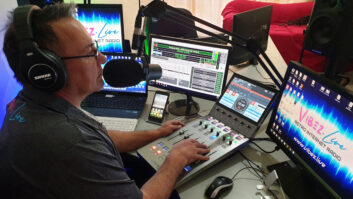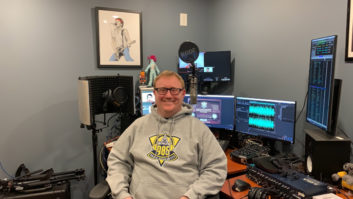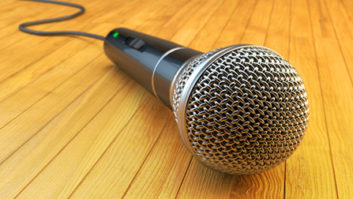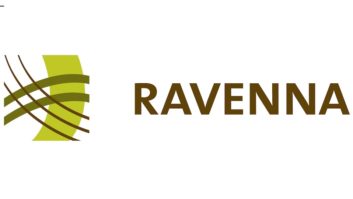
Credit:
Photo by Bob Kovacs The following comments were posted to radioworld.com in response to stories that appeared on the website or in print.
About “Are You Bullish on Podcasts?”:
–Podcasting, where one can download and store the entire podcast over Wi-Fi at home and listen to it later, for example even while on a flight, is vastly more convenient to the listener than the alternate of on-demand streaming of “podcasts” (sic) that only work while connected. I understand that there might be some music licensing differences between the two.
~ ~ ~
About “LP-250 Proposal Open for Comments”:
–We have a 250-watt repeater in our community, owned by a conglomerate, which now repeats the main station’s HD secondary channel, which then gives us a total of three FM channels that basically play the same ’70s oldies over and over again, 24 hours a day, via computer, with no local content whatsoever. Yeah, the corporation may be paying FCC fees, but what is it doing for the community? On the other hand, more proliferation of LPFMs means more chances of a “pirate” actually going legit when he sees the open doors at his community radio station. We have two LPFMs that I can’t hear. A power increase would be helpful. But I would like to see rules enforced as to local programming, before any power increase.
–All licensees need to pay to support the commission. There should be no “free ride” for those who want to be broadcasters.
~ ~ ~
About “IHeart Study Shows Potential Lost Listeners if Skywave Protections Relaxed”:
–The only thing relaxing skywave protection is going to affect are listeners outside a station’s contour. These are “extra” listeners that an AM station gets but have little to do with the community the station is licensed to serve. As such, there’s no reason why these additional listeners should be protected. Again a reminder: the FCC has already stated its intent to keep Channels 5 & 6 as part of the TV band. Forget this fantasy and focus on the real future for AM, all digital. It’s been proven to work and work well.
–Consider the migration to 76 to 88 MHz … 120 channels that are 100 kHz wide with five 72 kbps sub-channels each should be a powerful draw. The audio would sound very good compared to an FM station if the five sub-channels are programed independently and far better than FM if combined. The medium-wave band would sound much better after all the little (less than 5 kW) stations are gone. Regional stations could be given protection to 750 miles and 50 kW stations could have 1,500-mile radius protection. I would love to own a remaining MW station or a VHF digital (DRMx5) station after the transition.
–Relaxing interference standards may be something that will just happen. To mitigate, make relaxed protections conditional on GPS-synchronized carriers.
–A little history: The very existence of many of these smaller stations was conditional from the start on protecting stations that existed before them. For a long time, that meant daytime operation only. The Daytime Broadcasters Association then pleaded with the commission for some amount of night power…. Fast forward from the ’70s about three decades. Today’s owners are of a different generation and know nothing of the precedents that set up the current scheme, but physics doesn’t change with the political wind. With foot in the door from the few watts obtained back then, it’s now “let’s get more.” Don’t relax protection. It’s still needed, and not just for Class A.
–Just migrate the Class D stations to 76–88 MHz and restore the sanctity of the clear channel. Class C stations should be permitted to migrate to X-band on an auction basis to get 10/1-ND1 and then for any local channels (1230, 1240, etc.) freed up by the migration of the C’s, open those allotments up for auction. AM still has a future as a nighttime regional broadcasting service and we need to assure that the clear channels remain clear in as many places as possible and radio needs to market itself again to the nighttime.
–Jeff Littlejohn used “potential listeners” figures to show the impact of a reduced skywave protection. I venture a guess that the Nielsen figures used were those of total listeners within an area, as opposed to those who actually listen to his station. While his station may lose a few listeners if the skywave protection was relaxed, many local stations would have the potential to attract new listeners and stay financially viable. One station’s loss would provide several other stations a benefit. In current times, Class A stations sell minimal commercial time beyond their main coverage area. All the skywave coverage they have is just “gravy.” It’s time to think of the little Mom and Pop stations, large corporate stations have made their share of money already.
~ ~ ~
About “Audi Drives Infotainment Upgrade”:
–This news about CarPlay, if true, is very disappointing … They’ve been promising CarPlay for 2016 models, and I was about to place an order for an 2016 A3, but now I will not.
~ ~ ~
About “Stock a Better Station Toolbox”:
–I’ve learned to leave at least a screwdriver at a transmitter site, generally the Harbor Freight 4-in-1. That can save a trip back to the car. But if you’re looking for a really good single screwdriver try the Klein 32505 11-in-1 screwdriver. Klein quality and it does about everything you’ll need. I keep one in the car next to the seat. I’ve got a few more comments but ran out of space.
~ ~ ~
About “Five Questions: Geoff Steadman” and PPM watermark monitoring/enhancing:
–Waiting is always an option. However, it does give those who tend to be on the leading edge an advantage. When we’re talking dollars and cents, it doesn’t hurt to consider what any improvement in reporting of listening can do for a station’s advertising revenue. And since we’re talking largest markets, we’re talking bigger bux.
~ ~ ~
About “Attendance Cap for Next CES”:
–I call “BS” on this. The vendors are already paying big money for their displays at the CES, and even at the lowest $100 rate fee, CEA will rake in a cool $1.7 million for the honor of our attendance. Yep, it certainly will help cap attendance. I will not be going to CES in 2016 for the first time in 20 years as I already pay too much for the hotel room and airline tickets, even when purchased five months in advance. Good job guys, you will reduce the attendance at CES. I didn’t see anything Earth-shattering this past year anyhow, and the vendors’ reps were pretty faces that were clueless about my technical questions. Last interesting items I saw were Sony’s original release of OLE technology years ago and back in the ’90s when they released their MiniDisc technology.
~ ~ ~
About “Get Comfortable With Disruptive Ideas,” specifically FCC comments about pirate enforcement:
–Still coming down on the pirates? Great. But what about the legally licensed stations that ignore the rules? I’m already hearing a lot of AM Class A stations getting screwed up at night by supposed daytimers operating 24/7 (or Class Ds operating at full daytime power at night) and the FCC is already basically not enforcing the rules on the clear channels. This can only get
worse.
~ ~ ~
About “SBE Calls Proposed FCC Field Cuts ‘Draconian’”:
–The FCC should drop all fees for broadcasters with 25 or fewer stations. Actually all FCC offices should be closed and Congress start all over with a kinder agency and reinstate ownership limits now (with one year allowed to comply) to the old 7/7/7 rule. Stop the meaningless paperwork now.
–The problem I see with the consultant’s view recommending the field office closures has not taken into the relationship between the broadcasters and the local FCC offices. This relationship has grown over the decades into a level of cooperation and assistance that has created an immense level of compliance. Working in concert, we have been able to more accurately interpret the rules work out interference problems, improve EAS activities and create alternative inspection programs to name a few.
–If the commission is going to dramatically reduce its field offices and enforcement, maybe it can also dramatically reduce the annual fees that broadcasters pay. The radio companies, especially, will need some extra cash now to take the pirates and other ne’er-do-wells to court, to get the enforcement there that the commission will seemingly be cutting back on.
~ ~ ~
About “Consultants Presented FCC With Range of Field Office Options”:
–How about storing that equipment at local stations, accessible to members of the Society of Broadcast Engineers and training the members to use the equipment to track down interference? I’m not talking about the occasional “pirate,” but the everyday barrage of interference caused by everything from computers, to battery chargers, to big-screen TV sets, to bad power lines. Those are the things that cause people to tune away from broadcast transmissions. While you are at it, produce some PSAs that tell people how the valuable spectrum is being destroyed by RFI, and how to shop for better products that don’t pollute the spectrum. The equipment is expensive. Training is also expensive, but the techniques can be passed on to others.
~ ~ ~
About “Wheeler: FCC ‘Is More Efficient, More Transparent and More Engaged’”:
–Really? I guess that voting on “Net Neutrality” without it being available to the general public prior to the vote must be the new “transparency.” “Efficiency” must be defined by decreasing services where they are needed with the proposed field office closures. I will give them the “engaged with the public” as we still can comment, for what it is worth.
~ ~ ~
About “‘Franken FMs’ Get Longer Life”:
–That the FCC is even seriously considering this idea provides yet another reason why VHF channels will never be given to broadcast radio. If anything, after the repack, we will most likely see a full repopulation of the VHF band with LPTV broadcasters — including Channels 5 & 6. Radio broadcasters whining about interference from so-called “Franken FMs” is without merit since we’re only talking about broadcasting on the existing aural carrier for Channel 6 at 87.75 MHz. Radio’s future for growth is digital FM and OFDM transmission.
~ ~ ~
About “Pandora May Be Closer to Station Purchase”:
–If no station played music then the music makers and their agents would be in bad shape. Playing music on the radio or on the Internet is a form of free advertising and the agents, such as BMI and ASCAP, should be happy to allow lower royalties.
–It’s about time that the audio streamers get a break from the music industry. Why should any source that pays BMI, ASCAP and the other royalty people a separate royalty for streaming? Music is music, radio, recorded or streamed. I can understand an additional payment, but the same amount? Our small station would love to stream, but we are cash poor just paying for royalties already.










